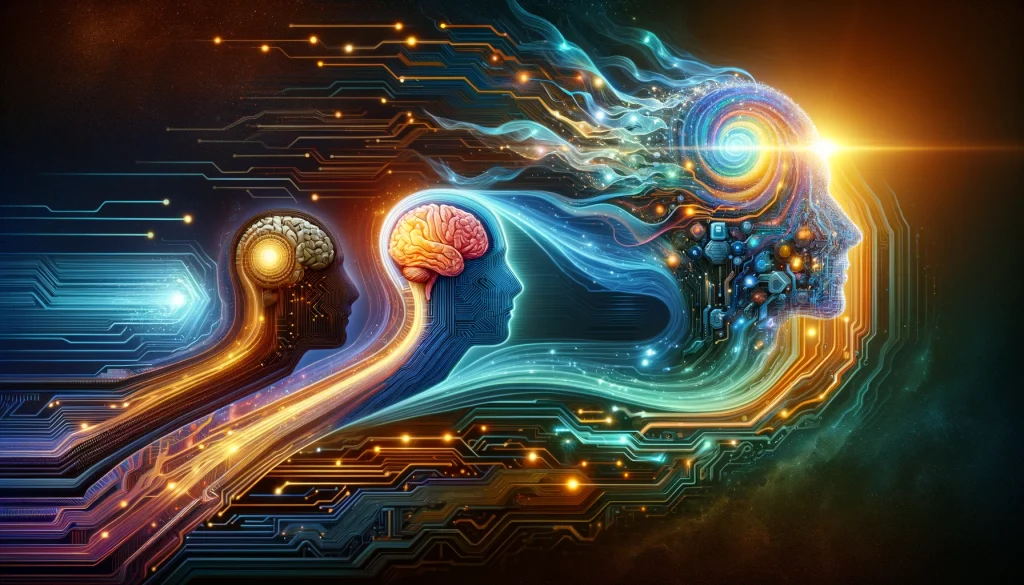The realm of artificial intelligence (AI) continues to astonish us, stretching the boundaries of what we believe to be possible. Among the forefront thinkers in this arena, some suggest that the threshold of artificial general intelligence (AGI) — a level of AI that emulates human intelligence — might be breached sooner than we anticipate.
In the wrap-up of this year’s Beneficial AGI Summit held in Panama, Ben Goertzel, a distinguished computer scientist with a penchant for haberdashery, proposed an intriguing timeline for the arrival of AGI and its subsequent evolution into artificial superintelligence (ASI). Despite the common belief that human-equivalent or superior AI wouldn’t be realized until 2029 or 2030, Goertzel entertained the possibility of such breakthroughs occurring by 2027.
Ben Goertzel on Artificial Superintelligence
During his address, the SingularityNET pioneer expanded on the notion that AGI could swiftly progress to Artificial Superintelligence — an AI that amalgamates the entirety of human civilization’s knowledge. This proposition underscores the unpredictability and the uncharted territories within the field. “As of now, no one has achieved human-level AGI; the trajectory to that milestone is fraught with uncertainties,” Goertzel shared with attendees. His statement highlights the mix of “known unknowns and probably unknown unknowns” that scientists navigate in this quest.
However, Goertzel isn’t alone in his speculative venture. The landscape of AGI predictions is diverse, with figures like Shane Legg, co-founder of Google DeepMind, maintaining a long-held belief in the 50/50 odds of AGI’s invention by 2028. Similarly, Geoffrey Hinton, often referred to as the “AI godfather,” expressed a loosely held estimate last May, projecting AGI’s arrival within five to twenty years.
Read more: How to Create an AI App in Just 10 Minutes
The Humanoid Robot
As the architect behind Sophia, the humanoid robot, Goertzel has been vocal about the singularity — a hypothetical future where AI matches and then quickly surpasses human intelligence. Although once deemed a fanciful concept, the advancement of large language models (LLMs) by OpenAI, particularly with the introduction of ChatGPT, has brought the potential for AGI within closer reach. Nevertheless, Goertzel clarifies that LLMs alone won’t usher in the era of AGI.
He envisions a future where, upon achieving human-level AGI, a swift transition to vastly superior AGI forms could occur, barring any self-imposed limitations by the AGI on its growth due to conservativeness. The ability for AGI to self-analyze and enhance could lead to an “intelligence explosion,” a scenario where AI’s cognitive capabilities grow exponentially.
Despite Goertzel’s optimistic projections, numerous caveats exist. A critical point of contention is the assumption that superhuman AI would possess a “mind” in the human sense, along with the belief in the technology’s linear and isolated evolution, detached from broader societal and environmental impacts.
Yet, the theory remains enthralling, especially when considering the rapid pace of AI development in recent years. Goertzel’s insights, while speculative, invite us to ponder the near future of AI — a future that might just be on the horizon sooner than we think.
The Conversation Surrounding AGI and ASI
The conversation surrounding AGI and ASI isn’t merely academic; it touches on the very fabric of our future interactions with technology. Ben Goertzel’s speculations at the Beneficial AGI Summit not only serve as a bellwether for the scientific community but also for society at large, beckoning us to consider the ramifications of such profound technological milestones.
Echoing the sentiments of pioneers before him, Goertzel’s timeline for AGI’s arrival — potentially as early as 2027 — underscores a fascinating, albeit uncertain, vista for AI’s trajectory. His belief in the rapid evolution from AGI to Artificial Superintelligence highlights an anticipation of AI systems that can aggregate and exceed the sum total of human knowledge. This progression, while exhilarating, is rife with “known unknowns” and the even more elusive “unknown unknowns,” painting a picture of a future that is as unpredictable as it is inevitable.
The dialogue around when and how AGI will come to be is far from singular. Industry stalwarts like Shane Legg and Geoffrey Hinton offer varying prognoses, with predictions spanning the next two decades. This variance underscores the speculative nature of the field, where even the most informed estimates are based on evolving understandings of AI’s capabilities and limitations.
Central to Goertzel’s musings is the concept of the singularity — a theoretical point where AI not only matches but surpasses human intelligence. This notion, once relegated to the realm of science fiction, has gained credibility with advancements in AI, particularly the development of sophisticated language models by entities like OpenAI. However, Goertzel is quick to temper expectations, noting that these advancements, while significant, do not in themselves herald the advent of AGI.
The Pathway to Superhuman AGI
The pathway to superhuman AGI, as envisaged by Goertzel, involves a series of iterative enhancements by the AI itself, potentially leading to an “intelligence explosion.” This scenario raises profound questions about the nature of consciousness and the ethical dimensions of creating entities with cognitive abilities that dwarf our own.
Yet, it’s crucial to approach these projections with caution. The assumption that superhuman AI would possess a “mind” in any human-like sense is contentious, as is the notion that technological development can proceed in a linear fashion, isolated from the broader impacts on society and the environment.
Despite these uncertainties, the prospect of AGI and ASI offers a compelling narrative for the future of AI. Goertzel’s reflections, speculative though they may be, prompt us to envisage a world where AI’s potential is fully realized. As we stand on the cusp of potentially groundbreaking developments in AI, the dialogue fostered by thinkers like Goertzel is invaluable, guiding us as we navigate the ethical, societal, and technological landscapes of the not-so-distant future.
Final Thoughts
This exploration of AGI and Artificial Superintelligence, grounded in the insights of Ben Goertzel and echoed by other luminaries in the field, serves not only as a forecast of what might be but also as a call to mindful engagement with the possibilities and challenges that lie ahead.

